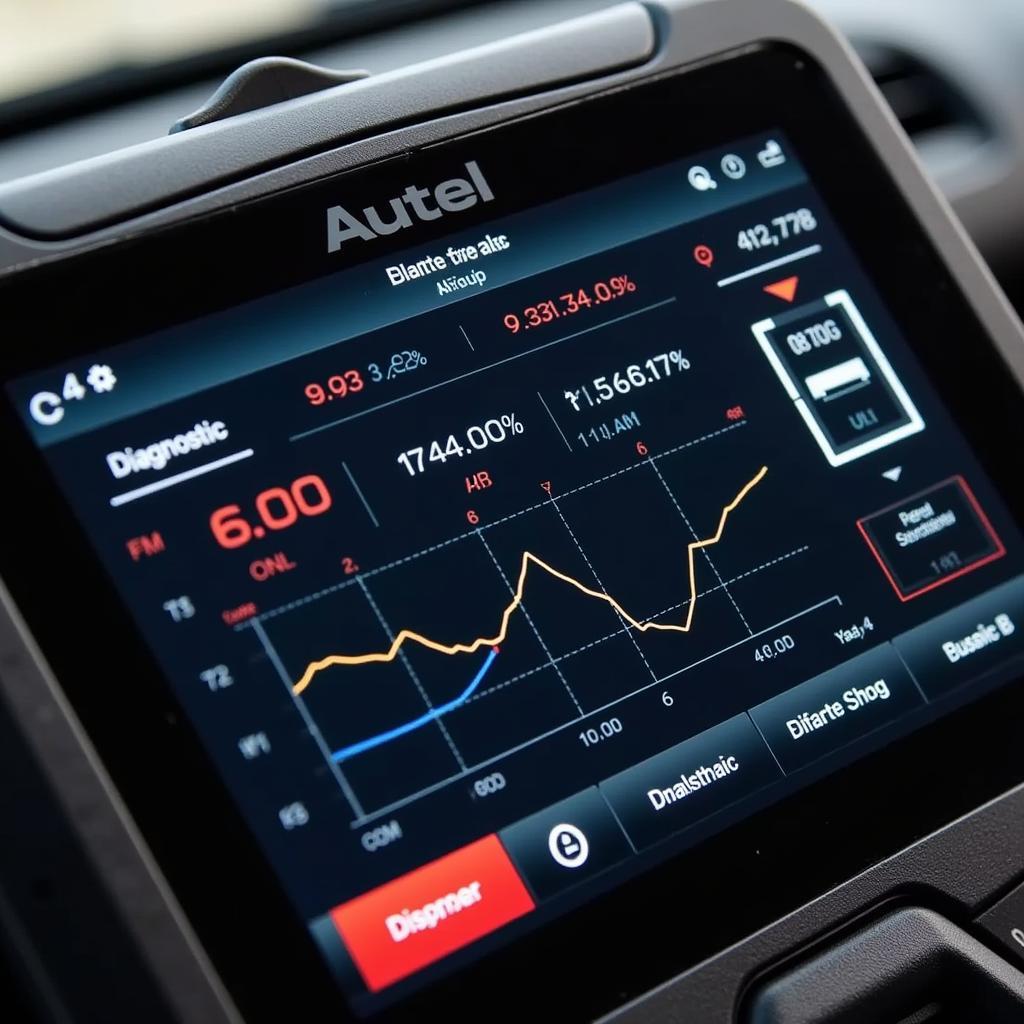A Scan Tool Sensor Test is an essential procedure for diagnosing car problems. It involves using a specialized device, known as a scan tool, to read data from your vehicle’s sensors. This data provides valuable insights into the performance of various systems, including the engine, transmission, and emissions system.
Understanding Scan Tools and Sensor Tests
Scan tools, also called OBD2 scanners, are electronic devices that communicate with your car’s computer. They access and interpret data from the vehicle’s sensors, which monitor parameters like engine speed, temperature, oxygen levels, and more. By analyzing this data, mechanics and car owners can identify malfunctions and pinpoint the root cause of car problems.
Sensor tests are specific functions within a scan tool that focus on individual sensors. They allow you to:
- Read live data: Observe real-time sensor readings to assess their current status.
- View historical data: Analyze past sensor performance to identify intermittent issues.
- Run active tests: Command certain sensors to perform specific actions and evaluate their response.
Types of Sensors Commonly Tested
Modern vehicles utilize a wide array of sensors. Here are some of the most frequently tested sensors using a scan tool:
- Oxygen Sensor (O2 Sensor): Monitors the oxygen content in the exhaust gases, impacting fuel efficiency and emissions.
- Mass Air Flow (MAF) Sensor: Measures the amount of air entering the engine, crucial for determining the correct air-fuel mixture.
- Throttle Position Sensor (TPS): Detects the position of the throttle pedal, influencing engine power and acceleration.
- Manifold Absolute Pressure (MAP) Sensor: Measures the air pressure inside the intake manifold, aiding in fuel delivery adjustments.
- Camshaft Position Sensor (CMP Sensor): Determines the position of the camshaft, crucial for ignition timing and valve operation.
- Crankshaft Position Sensor (CKP Sensor): Monitors the crankshaft’s position and rotational speed, essential for engine timing and fuel injection.
Performing a Scan Tool Sensor Test
While the exact steps might vary depending on the scan tool model and car make, here’s a general guide:
- Locate the OBD-II port: It’s typically found under the dashboard on the driver’s side.
- Connect the scan tool: Plug the scan tool into the OBD-II port.
- Turn on the ignition: Turn the key to the “on” position but don’t start the engine.
- Access the sensor test menu: Navigate through the scan tool’s menu to find the “sensor test” section.
- Select the desired sensor: Choose the specific sensor you want to test from the list.
- Interpret the results: The scan tool will display the sensor’s readings, often in numerical or graphical format. Compare these readings to the manufacturer’s specifications to identify any deviations.
Interpreting Sensor Test Results
Interpreting sensor test results requires some technical knowledge. Here’s a basic overview:
- Readings within range: If the sensor readings fall within the manufacturer’s specified range, the sensor is likely functioning correctly.
- Readings out of range: If readings are outside the acceptable range, it suggests a potential sensor problem or an issue with the system it monitors.
- Erratic readings: Fluctuating or inconsistent readings can indicate a failing sensor or a wiring problem.
Remember, consulting a qualified mechanic is recommended if you’re unsure about interpreting the results or suspect a sensor-related issue.
Common Issues Detected by Sensor Tests
Sensor tests can unveil a wide range of car problems, such as:
- Failed sensors: A complete sensor failure will often trigger a check engine light and produce out-of-range readings.
- Wiring problems: Damaged or corroded wiring can disrupt communication between the sensor and the car’s computer.
- Vacuum leaks: Leaks in the intake manifold can affect sensors like the MAP sensor, causing inaccurate readings.
- Fuel system issues: Problems with fuel delivery or pressure can be detected through sensors like the O2 sensor and fuel rail pressure sensor.
Benefits of Using Scan Tools for Sensor Testing
Employing scan tools for sensor testing offers several advantages:
- Accurate diagnosis: Scan tools provide precise sensor data, leading to faster and more accurate diagnosis.
- Early problem detection: Regular sensor tests can help identify issues before they escalate into major repairs.
- DIY repairs: Basic sensor tests can be performed by car owners with some technical knowledge, potentially saving on diagnostic costs.
Conclusion
Scan tool sensor tests are crucial for maintaining your car’s health and performance. Understanding how to use these tools and interpret the results can empower you to address car problems effectively.
Need assistance with scan tool sensor tests or have car troubles you need to diagnose? Contact ScanToolUS at +1 (641) 206-8880 or visit our office at 1615 S Laramie Ave, Cicero, IL 60804, USA. Our team of experts is here to guide you.

